2022 Rossignol Mandate
Wheel Size: 27.5’’ (Sizes XS and Small); 29’’ (Sizes Medium through XL)
Travel: 140 mm rear / 140 mm front
Material: Aluminum
Price: Complete bikes $2,400 to $4,400
Blister’s Measured Weight (size Large, XT build): 33.37 lbs / 15.14 kg
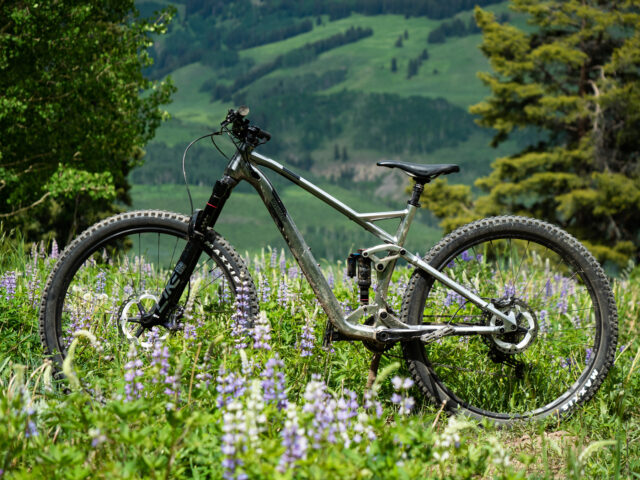
Intro
Rossignol (yep, that Rossignol) launched a completely new line of mountain bikes for 2022, which they are selling consumer-direct with US-based customer support for that market. The bike line consists of the Mandate Trail bike and Heretic Enduro bike; a pair of e-bikes; and a couple of kids models round out the range. Here we’re looking at the Mandate, their 140mm-travel all-rounder, and it seems like a compelling no-nonsense option with really good parts for the money. We’ve got one in for long-term testing, but in the meantime, let’s dive into the details of the bike:
The Frame
The Mandate is only offered with an aluminum frame and uses a Horst-link layout with a vertically-oriented shock to get its 140 mm of rear-wheel travel. That’s paired with a matching 140mm-travel fork, and there aren’t any flip chips, geometry adjustments, or wheel size options (for a given frame size — more on that in a minute). Cable routing is internal through the front triangle, and the Mandate pairs that with a threaded bottom bracket shell, plus a Boost 148×12 mm rear end with a SRAM UDH derailleur hanger. There’s also room inside the front triangle for a water bottle cage on all sizes, plus a second set of accessory mounts underneath the top tube — i.e., pretty much all the details you’d come to expect from a modern Trail bike.
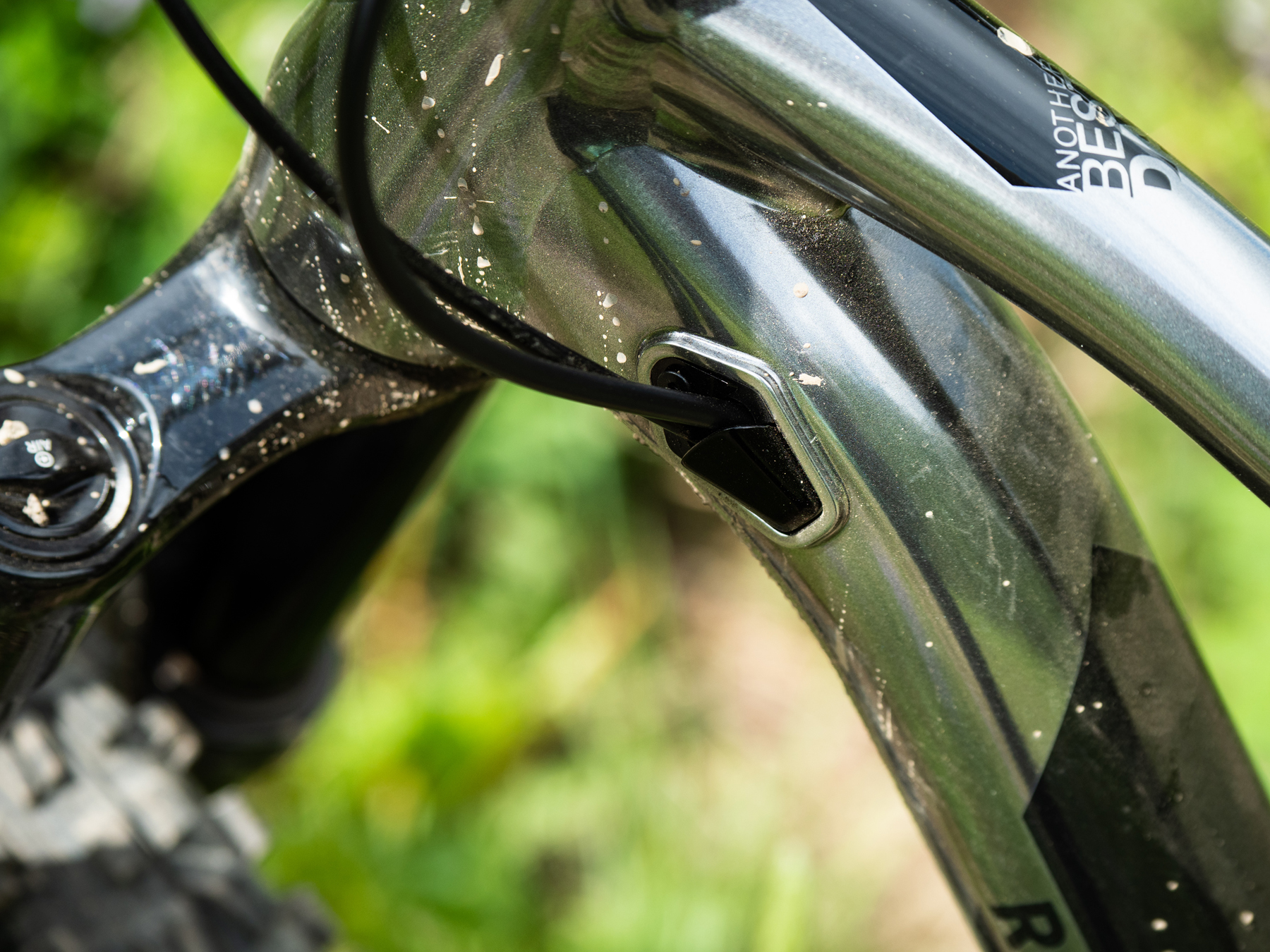
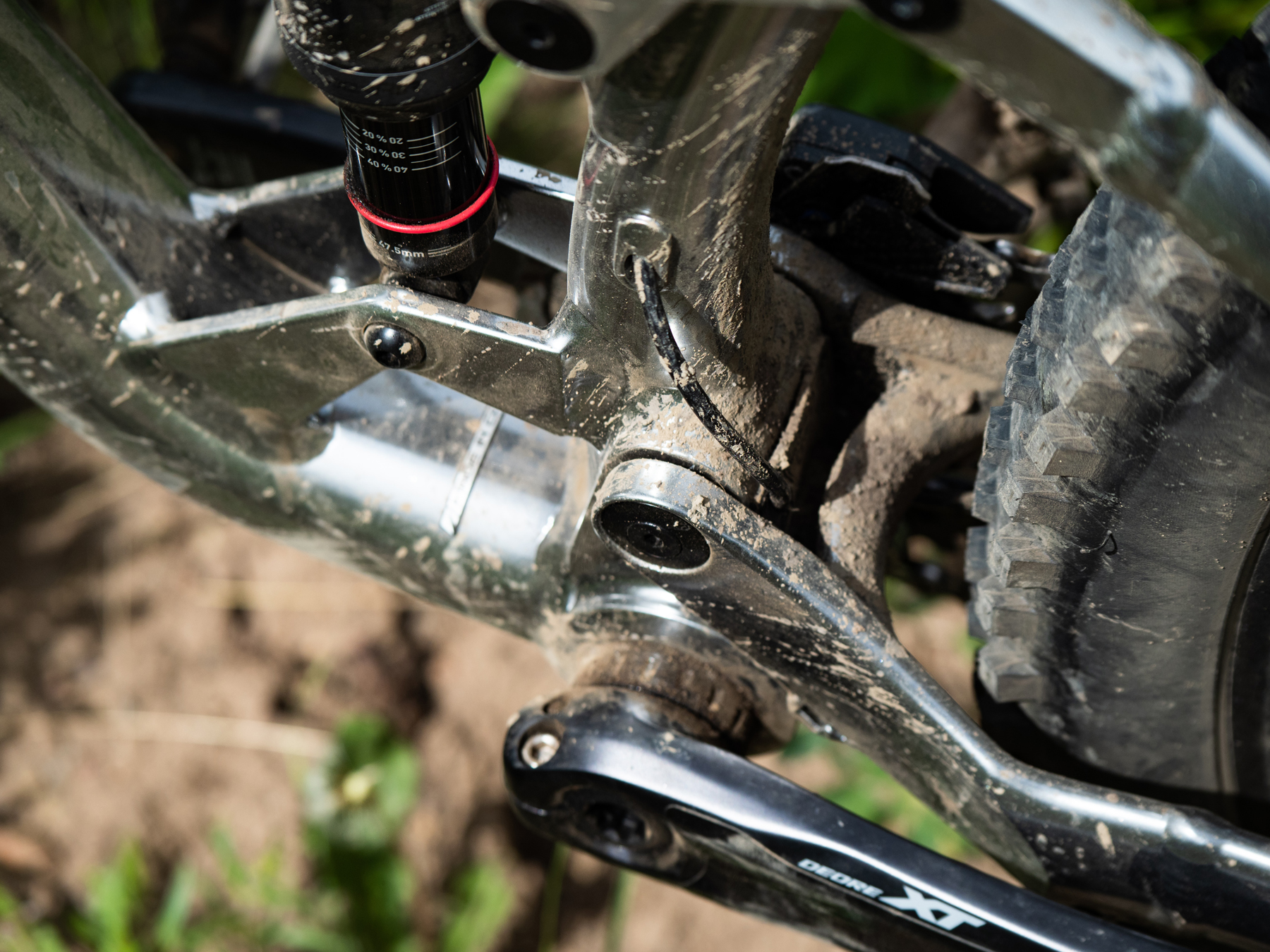
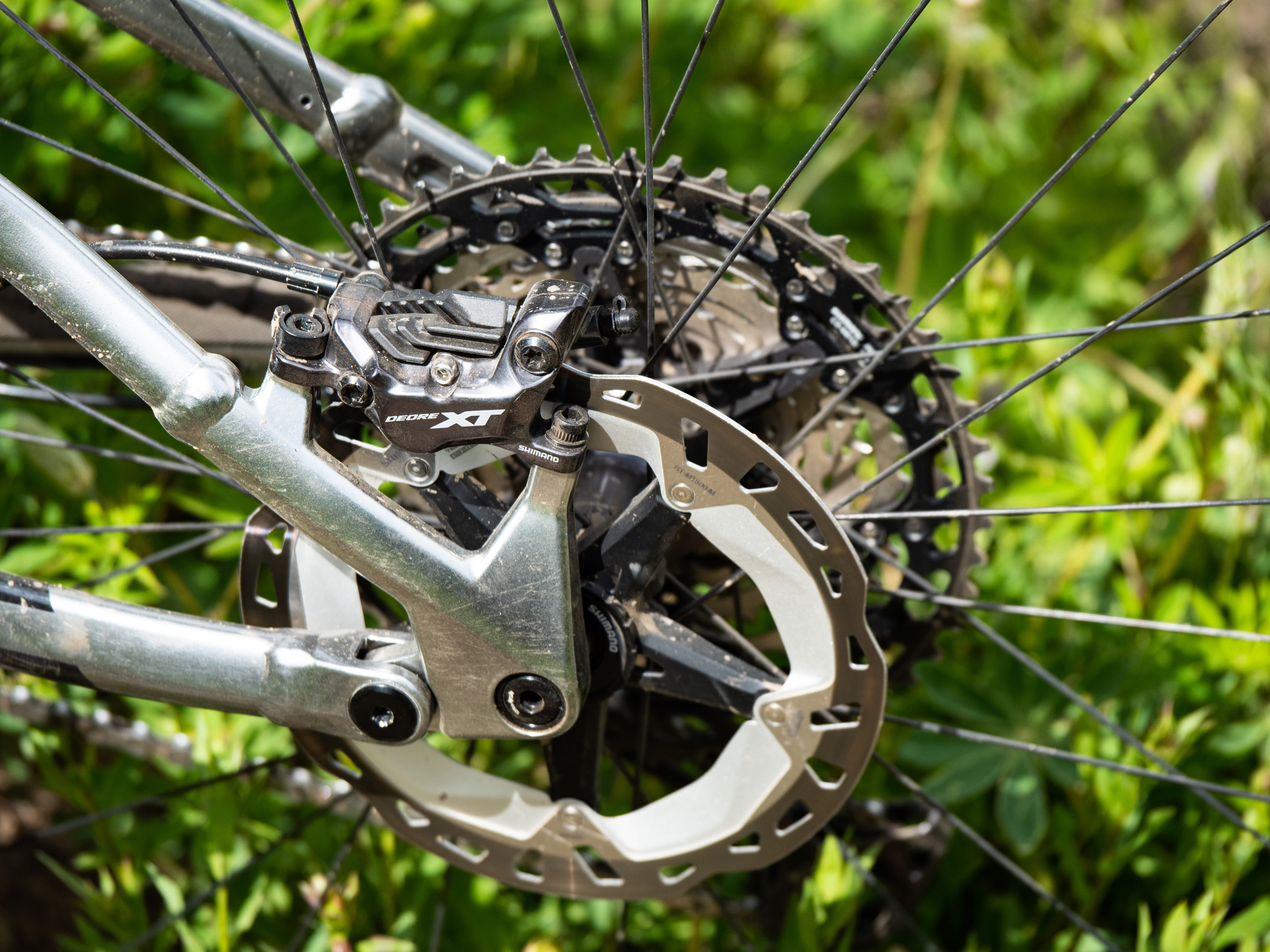

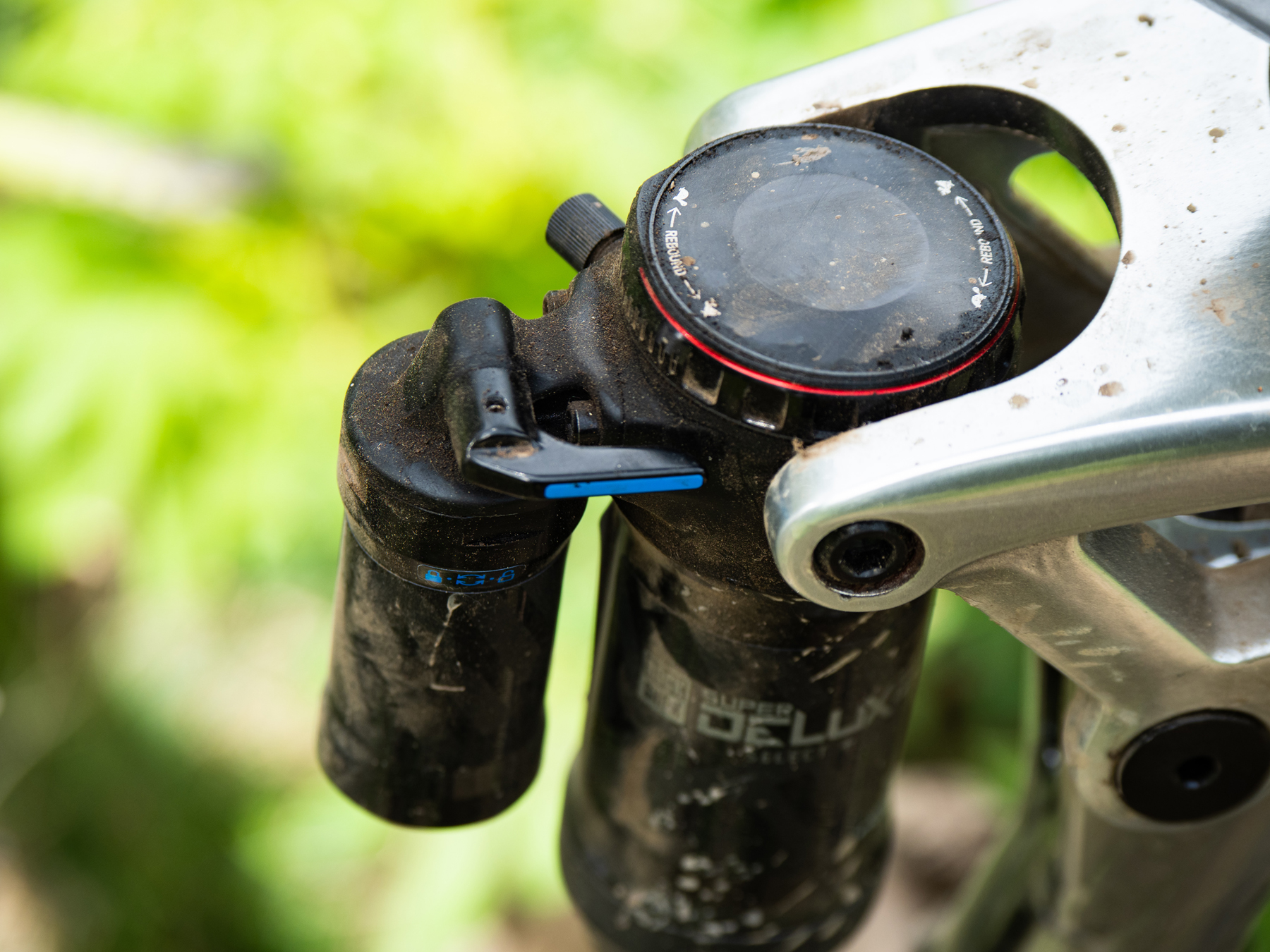
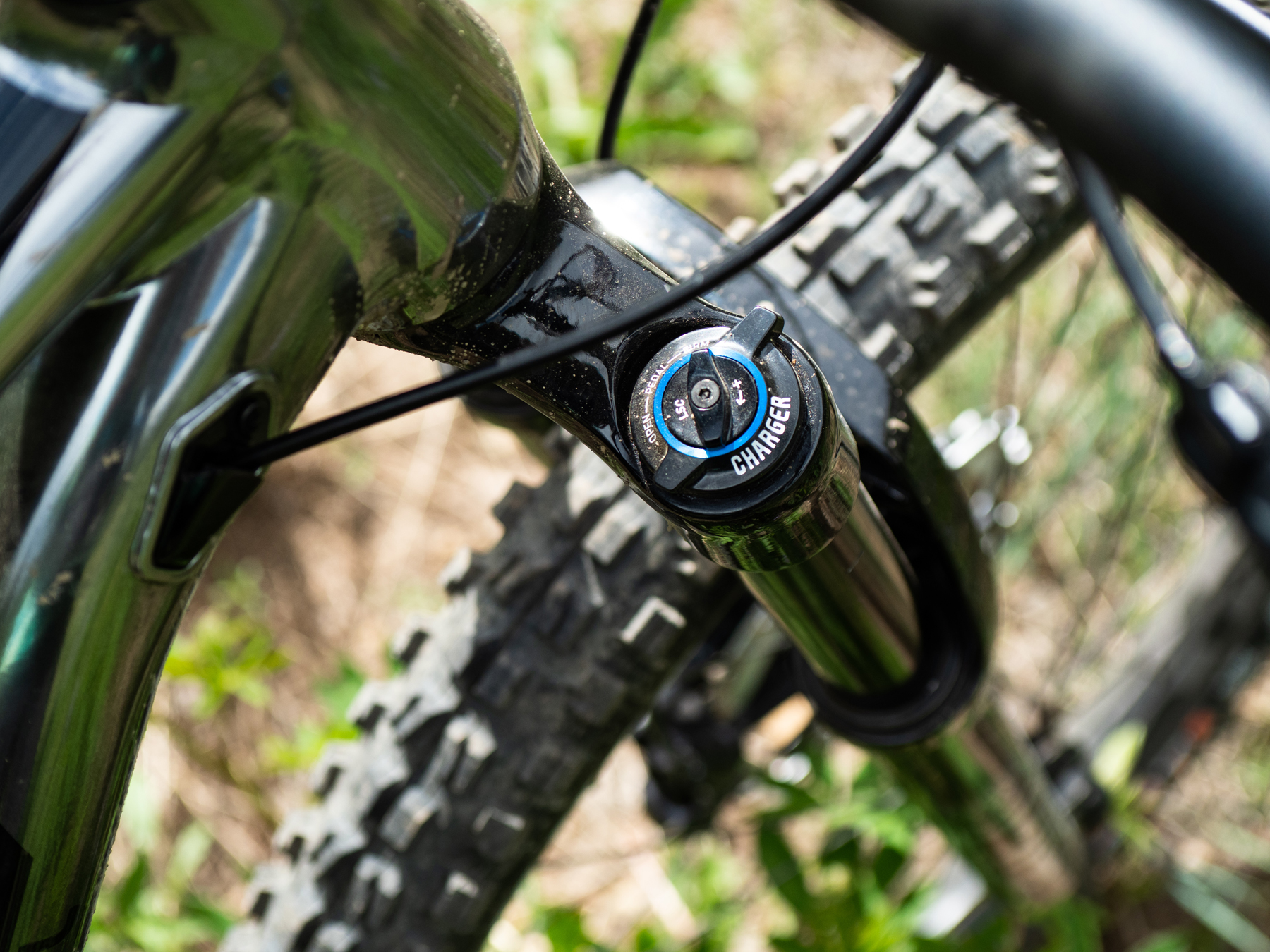
Fit & Geometry
Rossignol offers the Mandate in five sizes, XS through XL, which they say cover riders from 4’1’’ to 6’7’’ (150 to 200 cm). The smallest two sizes get 27.5’’ wheels, while the Medium and up are 29ers. We’ve seen a few other brands taking a similar approach with certain models — perhaps most notably Rocky Mountain — and the idea is to give shorter riders a bike that’s a little easier to muscle around, affords more tire-to-butt clearance, and has a more manageable bar height due to the smaller wheels (and shorter fork needed to clear the front one).
All sizes of the Mandate get a 66° headtube angle and 77.5° effective seat tube angle; reach ranges from 430 mm on the XS to 500 on the XL. The XS and Small frames have 425 mm chainstays, whereas the 29er sizes bump up to 430 mm. Those numbers aren’t wildly aggressive — there are certainly longer, slacker ~140 mm travel bikes out there — but they’re plenty modern (note the longish reach and steep seat tube) and seem like they should make for a fairly nimble, quick-handling bike.
The Builds
Rossignol offers the Mandate in three builds, all with Shimano drivetrains and RockShox suspension, and they’re really good values for money. If anything, the $3,400 SLX build might be the most impressive — you get a full Shimano SLX groupset including 4-piston brakes, good RockShox suspension, and serviceable wheels for less than a lot of carbon frames run these days.
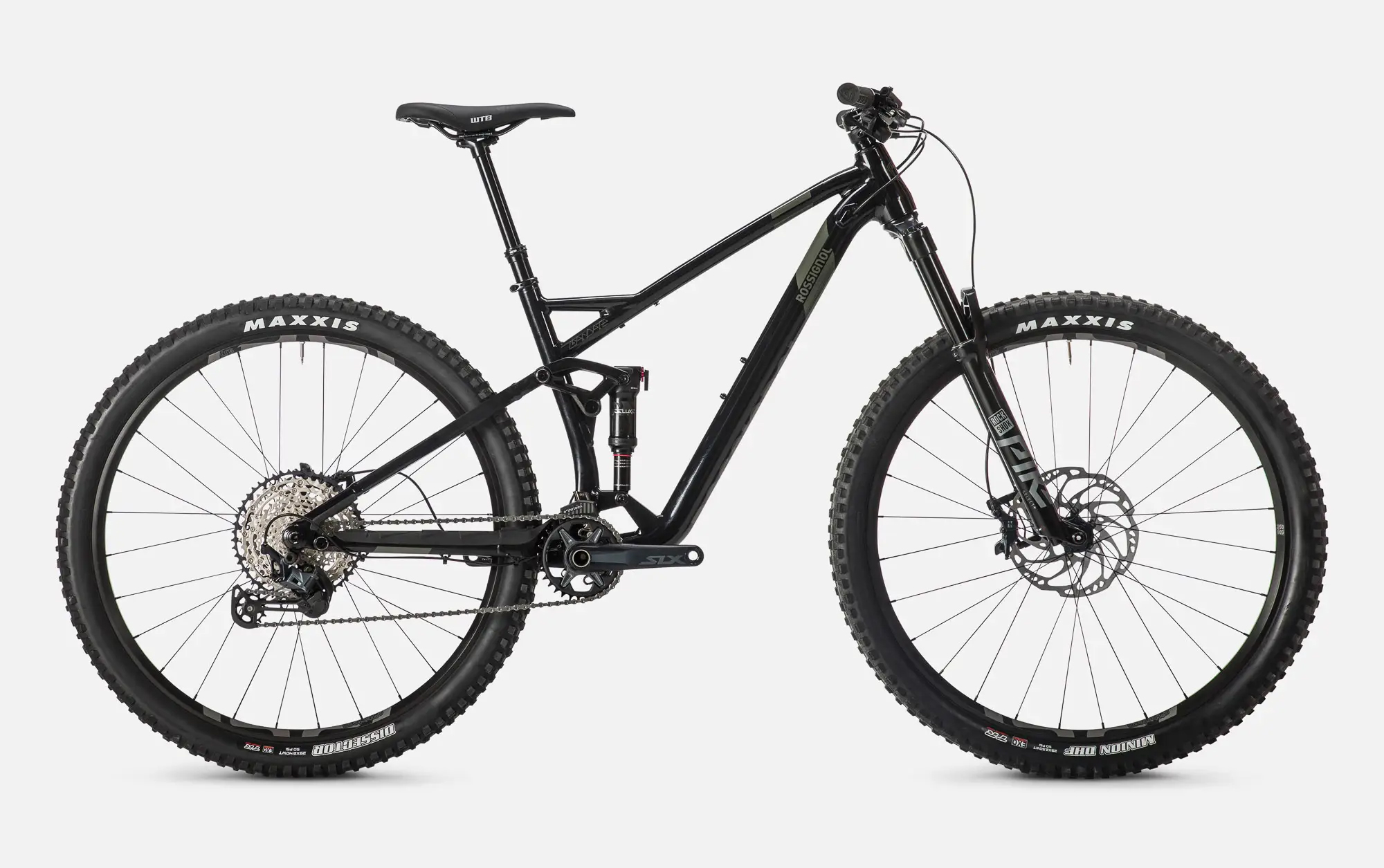
- Fork: RockShox 35 Silver
- Shock: RockShox Deluxe Select
- Drivetrain: Shimano Deore 11 speed
- Brakes: Shimano M4100 2-piston w/ 203 mm front / 180 mm rear rotors
- Wheels: WTB ST i30 rims w/ Shimano M400 hubs
- Dropper Post: KS Edge I
- Fork: RockShox Pike Select+
- Shock: RockShox Deluxe Select+
- Drivetrain: Shimano SLX
- Brakes: Shimano SLX 4-piston w/ 203 mm front / 180 mm rear rotors
- Wheels: e*thirteen TRS Base Trail rims w/ Shimano SLX hubs
- Dropper Post: KS Edge I
- Fork: RockShox Pike Ultimate
- Shock: RockShox Super Deluxe Select+
- Drivetrain: Shimano XT
- Brakes: Shimano XT 4-piston w/ 203 mm front / 180 mm rear rotors
- Wheels: e*thirteen TRS Plus Trail rims w/ Shimano XT hubs
- Dropper Post: KS LEV Integra
Some Questions / Things We’re Curious About
(1) The Mandate is a seriously impressive value for money in terms of parts spec, but is the frame up to snuff?
(2) And how does the Mandate stack up against a lot of the other mid-travel Trail bikes out there? Its geometry looks a little more conservative and biased towards quicker handling over stability than most, but is that borne out on trail?
Flash Review
Blister Members can read our Flash Review of the Rossignol Mandate for our initial on-trail impressions. Become a Blister Member now to check out this and all of our Flash Reviews, plus get exclusive deals and discounts on gear, and personalized gear recommendations from us.
Bottom Line (For Now)
The new Rossignol Mandate looks like a fairly quick-handling mid-travel Trail bike on paper, and it comes with an especially nice parts spec for the money. But has Rossignol, a brand far better known for making skis than bikes, put together a quality frame to hang those parts on? We’ve got a Mandate XT in for testing, so stay tuned for a full review soon.
FULL REVIEW
Intro
The Rossignol Mandate is supposed to be a do-it-all Trail bike, and it brings very impressive value to the table that will likely catch many riders’ eyes. We’ve now spent a few months riding the Mandate on just about everything the Gunnison Valley has to offer, and we’ve come away with some interesting findings.
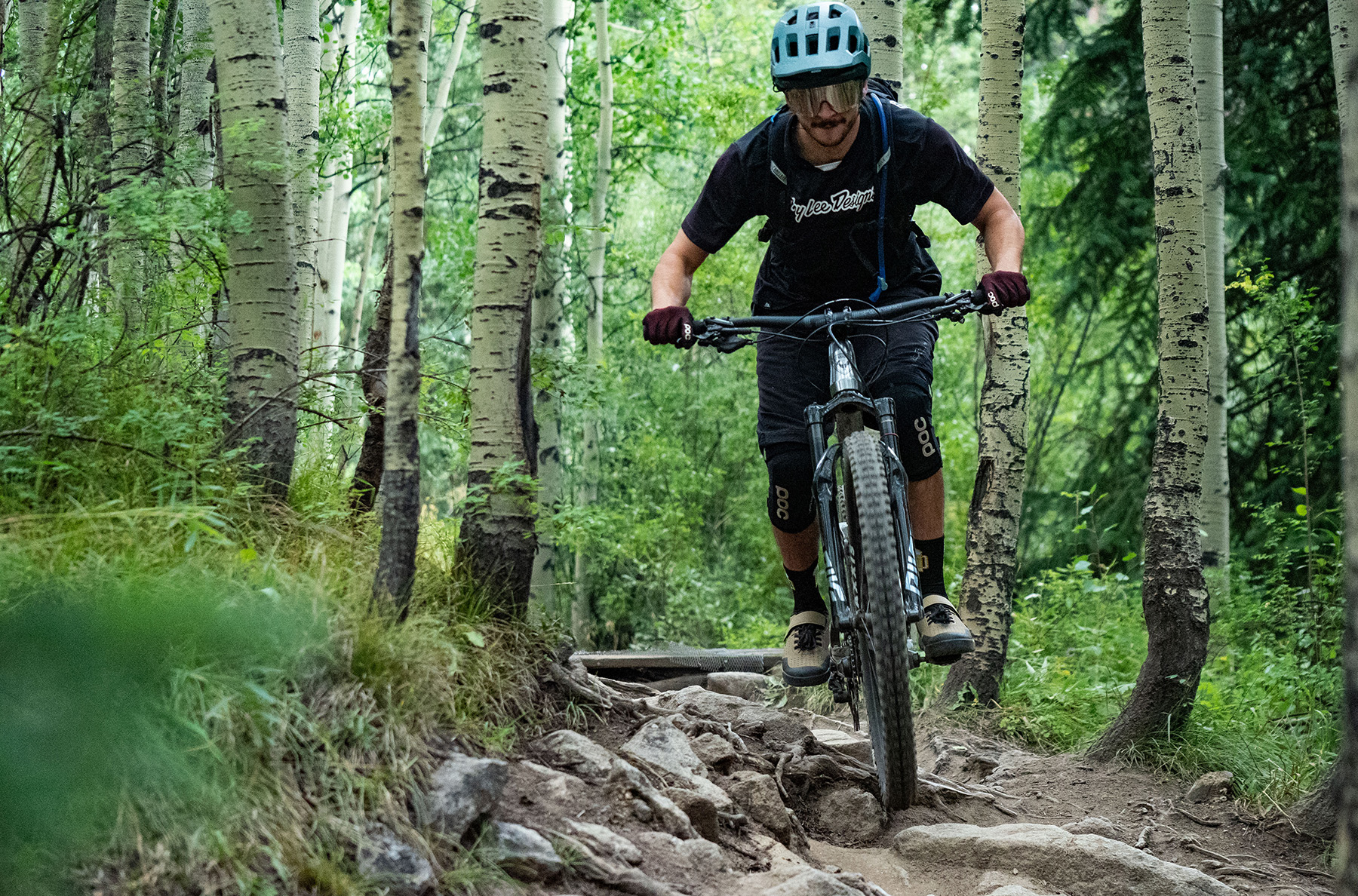
Fit & Sizing
Dylan Wood (5’10”, 158 lbs / 179 cm, 72 kg): Rossignol recommends the Large Mandate to riders who are between 175 and 190 cm tall, with some overlap with the Medium and XL sizes at the extremities of that range. At 179 cm tall, I am on the shorter side for what Rossi recommends, but still too tall for a Medium.
And, well, I find the fit of the Large Mandate very familiar and comfortable. After setting up the cockpit and saddle height to my preferences, the resulting fit was reminiscent of several other size Large Trail bikes I’ve been on as of late, such as the Pivot Switchblade & Trail 429 as well as the Santa Cruz Bronson. The seated pedaling position is comfortable; not too stretched out, but not too cramped. Overall, everything feels quite normal when assessing the basic fit of this bike.
Luke Koppa (5’8”, 155 lbs / 173 cm, 70 kg): I’m a bit outside the recommended height range for the size Large Mandate, but it was still fairly easy to get along with overall. Mainly, I feel a bit stretched out during seated pedaling, but that’s pretty standard for most modern size-Large bikes I’ve tested. If I bought the Mandate, I’d opt for the size Medium for the added climbing comfort.
Climbing
Dylan: The overall character of a bike can often be felt while climbing, before the bike has even been taken to any significant speeds. In the case of the Mandate, this bike felt well-rounded off the bat, with perhaps a slight bias toward a more efficient, sporty ride. It was clear that the Mandate isn’t intended to be the quickest, most uphill-friendly bike in its category, nor was it designed to be an outlier in terms of its suppleness and downhill performance.
Rather, the Mandate offers a nice blend of efficiency and traction that made it feel at home on smooth, mellower climbs and steeper, more technical ones alike. Of course, as an all-rounder, this is often the case, but it is worth mentioning that the Mandate is quicker and more efficient than more downhill-oriented Trail bikes like the Commencal Meta TR 29, yet a bit more traction-rich than the even sportier Pivot Switchblade. However, I’d be hesitant to say that this bike has a true 50/50 balance in this regard. Instead, the Mandate falls slightly on the more efficient end of the spectrum and allows for attacking the climbs a bit more productively than say, the V2 Santa Cruz Hightower.
As far as body positioning goes, the Mandate’s familiar and comfortable fit continues on the way up. Its moderate 77.5º seat tube angle allowed me to stay seated on very steep climbs while also feeling slack enough for flat roads. I’d still creep up a bit forward on the saddle on super steep inclines (such as Teocalli Ridge in Crested Butte), but for the Gunnison Valley’s moderate-to-steep climbs, I found it very appropriate. Additionally, I thought the 66º head tube angle on this bike kept the front wheel planted and prevented it from wandering, and the Mandate felt easy to maneuver around tight switchbacks, too.
Despite being on the slightly heavier end of the spectrum for a trail bike (~33 lbs / 15 kg), this weight doesn’t really show up in this bike’s uphill performance. Its suspension feels as if it compensates a bit for its weight, unlike the notably heavier Commencal Meta TR 29 Race (~36 lbs / 16 kg), which definitely feels more sluggish on the uphill.
Luke: Yep, I think the Mandate hits a really good middle ground when it comes to climbing performance for a Trail bike. It’s slightly on the more efficient end of the spectrum in terms of suspension bob, but not so much so that I often struggled to maintain traction. Add in its steep-enough but not excessively steep seattube angle, and you’ve got a recipe that feels at home in a wide variety of pedaling scenarios.
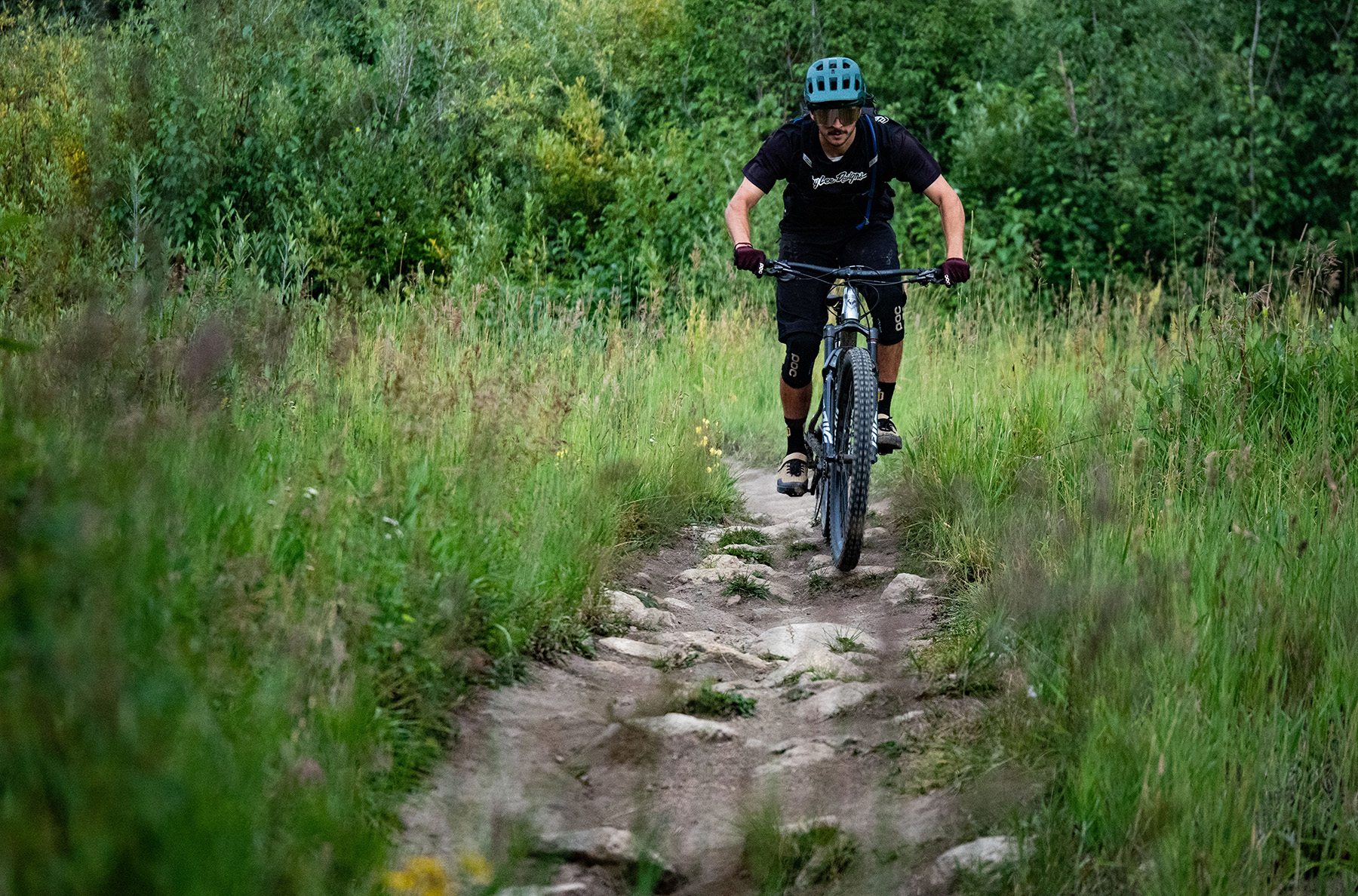
Descending
Dylan: On the way down, the Rossignol Mandate feels like a good tool for the job on certain trails, but less so on others. Let’s start with the good:
I found the Mandate to be most at home on tighter trails without a ton of vertical drop; trails that allow you to mostly stay off the brakes but require that you be ready to make quick changes in direction. The Mandate is a nimble bike that is more responsive to steering input than many of the longer, more slack Trail bikes out there (the Canyon Spectral comes to mind). It feels agile in tight corners when you’re mostly steering with the bars, and it is also intuitive when mostly steering from your hips or feet, leaning the bike into corners.
I also found that the Mandate handles rougher, flatter trails well. Its quick steering and efficiency come in handy on trails where gravity isn’t providing a ton of speed, and instead, you need to be active over rough sections to maintain your pace. I could see this bike being a bit more attractive than short-travel Trail bikes with similar geometry if the terrain available to you is not very steep but pretty rough — the extra travel that the Mandate has over a ~120 mm Trail bike does smooth out some extra-chattery trails a bit more effectively.
I’ve had some good times and some bad times on this bike once I get away from mellow trails and flatter tech. Generally, the steeper, looser, and rougher the trail, the more out of place the Mandate felt. Specifically, I struggled with achieving and maintaining reliable front-wheel traction. This resulted in some skipping / skidding of the front wheel when braking through rough terrain, a pretty uneasy feeling. Most notable was a sensation I felt in corners; the front wheel felt easy to wash out of corners, and not very supportive nor confidence-inspiring. It was concerningly easy to push the front wheel loose of the trail, and I often felt like I was either oversteering or understeering on this bike due to the vague and loose feeling of the front wheel.
Additionally, the RockShox Super Deluxe Select+ rear shock on this bike didn’t feel adequately tuned to this bike’s needs. To be more exact, I found that the bike’s rear shock lacked support on bigger, harsher hits, especially repeated ones. Because of this, I found myself running more pressure in the shock, equating to about 25% sag, and I also had to run slightly quicker rebound damping than I’d prefer, in order to keep the Super Deluxe sitting higher up in its travel to feel less harsh over trail chatter. This resulted in riding higher than I’d usually prefer for the rear shock, putting more weight on the front wheel, and exacerbating the issues I described in the paragraph above. I think this could be resolved with more compression damping in the stock tune (it comes with RockShox’s “medium” tune). Additionally, adding volume spacers (on top of the already-included 2.5 spacers) or RockShox’s MegNeg air could make this rear shock feel better, but given that this is a budget-oriented, direct-to-consumer mountain bike, I think it’d really just be best if Rossignol addressed this from the factory instead of leaving the consumer to tinker with their shock’s setup.

Riding machine-made blue flow trails at Mt. Crested Butte’s bike park, the Mandate felt fine so long as conditions weren’t super blown-out. Where there was plenty of traction, I wasn’t trying to go very fast, and I rode with a deliberately balanced stance, the issue of front-end traction wasn’t very apparent. And again, at slower speeds and on flatter trails, there weren’t really any ride attributes that were super concerning. But realistically, a lot of riders will be riding the Mandate on loose, rough, less-than-perfect trails that require a solid front end to ride with any confidence. It’s not that the Mandate is utterly terrible, it’s just that there are lots and lots of good Trail bikes out there, and so feeling a vague and sometimes sketchy front end on a bike really stands out.
Luke: I agree with much of what Dylan has said, though to varying degrees. Once I got accustomed to it after a few rides, I eventually found the Mandate to be pretty predictable and adaptable to most trails. However, the acclimation period on this bike was a bit longer than on some others, which I think mostly comes down to the front-end traction troubles Dylan noted. Mostly, I found myself under-steering on corners when I first got on the Mandate, and had some slight push-outs on flatter corners with loose debris atop hardpack.
Now, once I had spent a few rides aboard the Mandate, these issues were mostly nullified. Provided that I focused on maintaining a fairly forward-biased stance and weighted the bars / front end of the bike, the under-steering and lack of traction went away (at least for me). My daily driver is a size Medium Commencal Meta TR, which isn’t super far off from the size Large Mandate in terms of front center (and the ratio of longer front center to notably shorter rear center), so I’ve grown accustomed to needing to focus on a more forward stance. Still, I think this is worth noting for those interested in the Mandate.
As far as suspension goes, I wasn’t a massive fan of the Mandate’s setup, but I think it will serve many people pretty well. I wish Rossignol had opted for the version of the Pike Ultimate that features low- and high-speed compression adjustments, rather than just low-speed and a 3-position climb switch, since I never end up touching forks’ climb switches and would appreciate the added customization options of the alternative model. As for the rear suspension, like Dylan, I had a tricky time finding a nice balance of sensitivity and support. I also ended up running a bit less sag than usual, which led to a slightly harsher feel over chattery trails when compared to, say, the Meta TR 29 Race and Canyon Spectral 29. For a do-everything bike with 140 mm of travel, I still think the Mandate hits a nice middle ground (and further tweaking via volume spacers could probably help), but it’s far from the most plush, bump-eating bike in its class.
Personally, I enjoyed the Mandate the most on trails of all grades that didn’t have a lot of big compressions. Repeated big hits were where I felt that the Mandate struggled in terms of composure and not getting hung up on trail obstacles, but it does still do a better job of absorbing and managing small to medium-sized trail chatter than some shorter-travel alternatives. I didn’t have any major issues with it on steeper, somewhat smooth trails, though you’ve got plenty of alternatives in this class with more slack head tube angles that feel more intuitive and composed in those scenarios.
The Build
Dylan: The value that Rossignol packs into its “XT” build for the Mandate is seriously impressive, though I think there is room for improvement. I had zero issues with the Shimano XT drivetrain, and it shifted perfectly throughout our testing period. The e*thirteen TRS Plus Trail rims w/ Shimano XT hubs made for a solid wheelset, and while I did end up breaking a spoke, I wouldn’t blame the wheels for it (it was more due to poor line choice). The Maxxis Minion DHF (front) and Dissector (rear) tire combo offered a nice balance of traction and rolling efficiency, and I think it’s a great combo for a Trail bike like the Mandate.
The Pike Ultimate fork performed quite well overall, though it would be nice to have the more downhill-oriented RC2 damper (I never use a fork lockout and would prefer the low- and high-speed compression damping options instead). The Super Deluxe Select+ rear shock is one I’ve enjoyed on many bikes, and I think it has the potential to work well on the Mandate with some revised tuning. I also enjoyed the 4-piston Shimano XT brakes, though I would have preferred a rotor larger than 180 mm in the rear (fortunately, that’s one of the cheaper upgrades you could make).
The cockpit on this bike was fine, though I could never get the e*thirteen Plus handlebar rolled at an angle that felt quite right. Additionally, I often complain about dropper posts being too short on size Large bikes, and given that the Large Mandate comes with a 150 mm post, I definitely found it too short. I would imagine that just about anyone riding a Large Mandate could get away with a post with at least 170 mm of drop.
Luke: Agreed. Dylan covered all the pros and cons I would have listed.
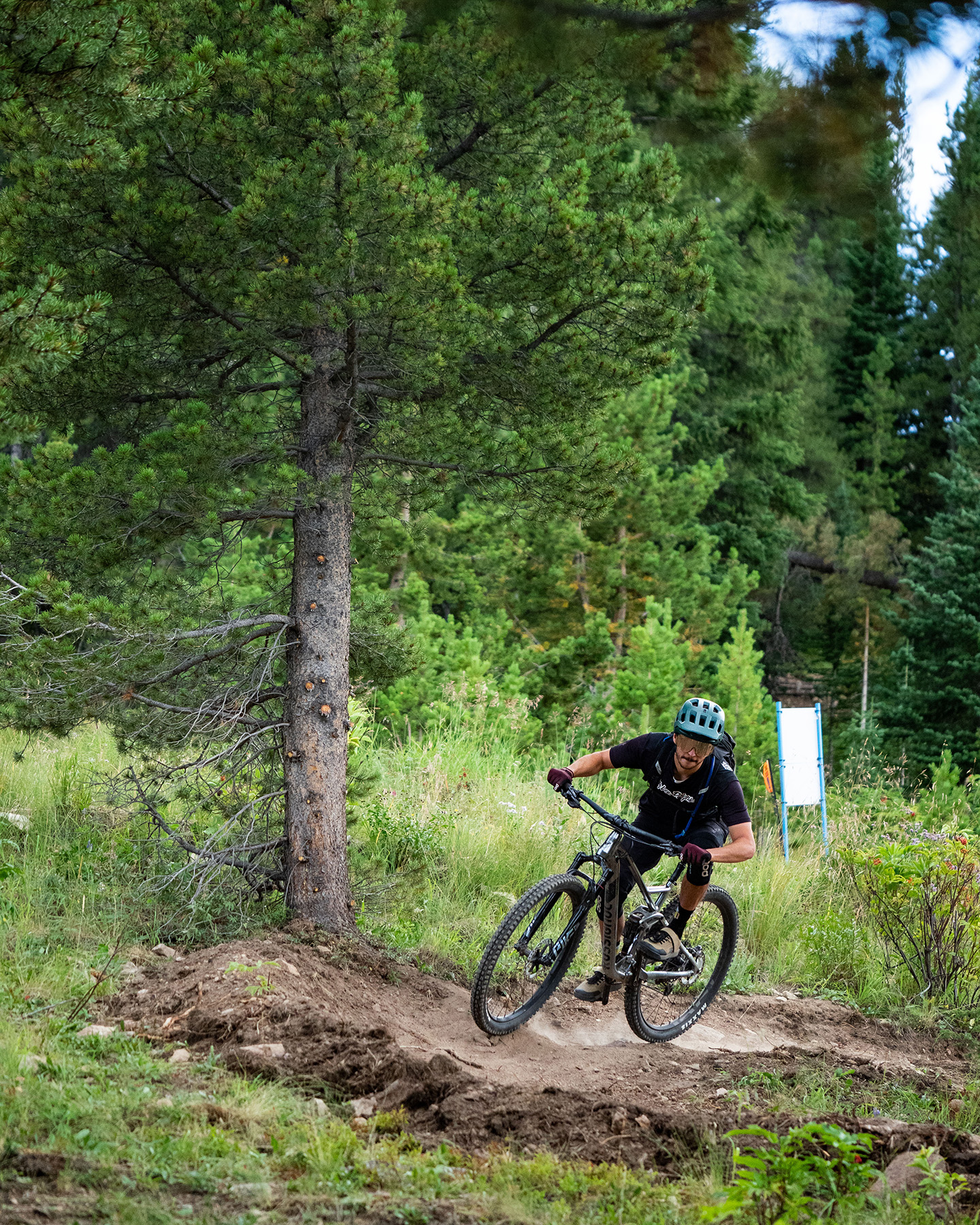
Comparisons
The Pivot Switchblade is more efficient and sporty than the Mandate; the Switchblade is more rewarding when you’re mashing on the pedals, and it feels a bit easier to pick up and place where you want. Despite having somewhat similar geometry, the Switchblade feels more predictable at high speeds and in rougher terrain. It also caters to a stiffer overall suspension setup than the Mandate and keeps its speed better through rolling terrain. The Mandate’s suspension is a bit more forgiving and plush, though not by a huge margin. One aspect where the Mandate is the clear winner is value (and this holds true for many of the bikes below): to get a similarly specced Switchblade, you’d have to spend anywhere from $2,000–$3,300 more. That’s significant.
Pivot Trail 429 (Enduro builds)
The Trail 429 Enduro is a bit like a more XC-oriented Switchblade, so it’s even more efficient and a better climber than the Mandate. The Mandate is even more plush and forgiving than the Trail 429, too. Despite having 20 mm less rear travel than the Mandate, this Trail 429 (in its “Enduro” build with a 140mm-travel Fox 36) didn’t feel any less capable on the way down due to the Mandate’s lack of predictable front-end traction and the Trail 429’s more well-rounded suspension components.
This is a similar comparison to the Switchblade; the SB130 is a more efficient, game-on bike than the Mandate. Its geometry also feels more stable and predictable on faster, more demanding trails, while the Mandate does feel more nimble and like it doesn’t need as much speed or aggression from the rider to feel engaging.
This comparison is similar to the Trail 429 comparison above. However, the Jet 9 is a bit more plush and traction-oriented than the Trail 429, though it’s still a better pedaler than the Mandate. Even still, the Mandate’s sometimes unpredictable handling hampers its downhill performance to the point that the Jet 9 isn’t notably worse on steep, chattery trails.
The Medium Shadowcat we tested is a bit shorter than the Mandate, and it also has smaller 27.5” wheels. But, other than that, the geo of these two bikes is somewhat similar, offering a more nimble, quicker-handling ride than most modern Trail bikes. But the Medium Shadowcat is even more nimble and playful than the Large Mandate, and we expect this to hold true in equivalent sizes. Additionally, the Shadowcat has more efficient, stiffer suspension than the Mandate, but the difference here is less pronounced than the Switchblade vs. Mandate comparison. The two are pretty similar in terms of stability in rough sections of trail, with the Mandate being a bit more composed and maintaining speed slightly better.
I’ve only ridden the V2 Santa Cruz Hightower, so I am basing this comparison on what David had to say in his review of the not-very-different V3 Hightower.
The Hightower is a more plush and downhill-capable Trail bike than the Mandate. While the Mandate does have a slight edge in terms of its overall efficiency which makes it feel more appropriate for mellower trails, the Hightower feels notably more planted and stable at high speeds and on rougher trails.
The latest Bronson is even more downhill-oriented than the Hightower, and feels much more at home on steep, technical terrain than the Mandate. Again, the Mandate does handle mellow, tighter, flatter trails better, though.
Similar to the two bikes above, the Meta TR 29 feels more biased toward the downhill-friendly end of the spectrum, but the Meta is even more of an outlier in terms of how planted and capable it is on rough descents for a 140mm-travel Trail bike. The Mandate is a notably more efficient bike and more nimble in tight spots, but it also feels like much less of an appropriate tool for riding fast on chunky trails.
Similar to the Meta TR 29, the Spectral is one of the longer, more slack Trail bikes out there. The Spectral 29 offers a similar balance of efficiency and traction as the Mandate on the way up, but its notably longer wheelbase results in a more stable ride on the way down. The Mandate makes quick changes of direction and slow, tight corners a bit more feasible, though.
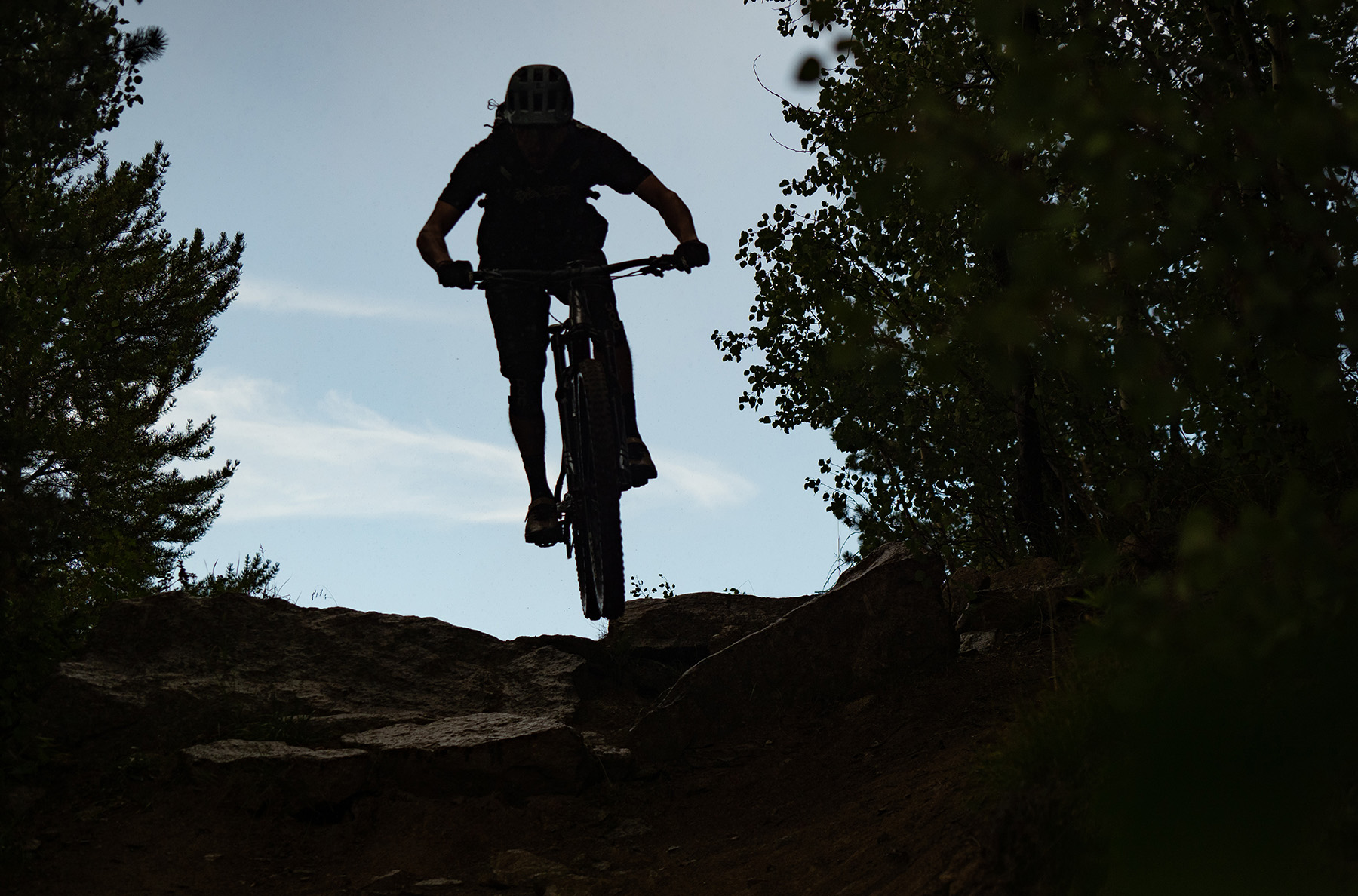
Who’s It For?
Dylan: This part is tricky. I know for sure that the Mandate isn’t for riders looking for lots of downhill capability and a confidence-inspiring ride on steep, rough, and/or loose trails. And while it does just fine on flatter, mellower trails, it’s hard to recommend this bike over something like a short-travel Trail bike for that application, unless you happen to ride a lot of winding trails that aren’t steep but have plenty of rocks and roots. Beginner and Intermediate riders who aren’t looking to break the bank could find a lot of value in the Mandate, and I am sure there are riders out there who could make it work and have a great time on the bike.
Luke: As a less experienced, less aggressive rider than Dylan, I think my proposed demographic for the Mandate is a bit broader. After spending more and more time on the Mandate, it’s not that I experienced any major shortcomings, it’s more that there are so many really good bikes in this class that do certain, or several things better. However, a lot of those bikes are a heck of a lot more expensive when comparing similar builds. So while I wholeheartedly agree that there are many better ~140mm-travel bikes for those who prioritize downhill performance on steep and/or rough trails, I think plenty of other people could still be quite happy with the Mandate. As Dylan noted, those interested in the Mandate for use on less technical descents should consider the growing short-travel Trail bike category, since there are bikes in that class that are better on the up and similar on the down. But if you’re not riding really rough trails and want to get great components for the price, I think the Mandate deserves consideration.
Bottom Line
Dylan: In a world full of Trail bikes that typically range from “good” to “excellent,” it’s harder to get away with being just “okay.” While the Rossignol Mandate offers very attractive value, its performance out on the trail falls short of its many solid competitors. Though, if you don’t need to ride super hard and fast through challenging terrain on your Trail bike, this shouldn’t be an issue.
Luke: Personally, I’d still slot the Mandate into the “good” category of Trail bikes; it does a respectable job of handling the various tasks required of a do-everything Trail bike. But Dylan’s main point still stands — there are many other bikes in this class that offer better overall downhill performance, particularly on rough and/or steep descents, and others that are lighter and more efficient on the climbs. Still, in a world where bikes are hard to come by and certainly aren’t getting any cheaper, I think the Mandate is a worthwhile contender for those seeking a versatile, more reasonably priced Trail bike that won’t see tons of steep, rough, challenging descents.

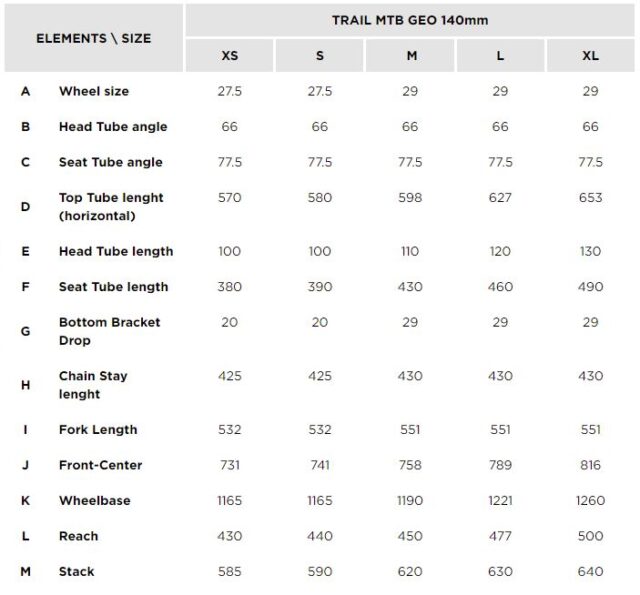
Will the women’s-specific version be called the “Girl date”?
Geometry almost looks spot on to my Orbea Occam. Will be interesting to read how it compares!
66 ht! :))
I work at a bike rental shop and we have a little over 30 brand new Rossi bikes this year, with about 20 being mandates and 10 heretics(with varying builds). They’re not very good. We’ve been building them out over the past 2 weeks, and already have 8 down for maintenance issues. Half are due to broken dropper posts, which shipped in a defective/broken state. The other half are, 2 broken/sheared off lever clamps, broken wheel(shipped broken), and a couple wheels very untrue after just a few days use. They also ship them with plastic pedals which aren’t worth riding. While it’s expected to buy your own when you get a bike, I’d rather they ship with no pedals so I don’t have to dispose of 30 sets from an environmental standpoint. On that topic they packed the bikes using a lot of styrofoam, while other manufactures such as Trek and Scott use only cardboard. I did a ride with a co-worker where he took out a new Rossi and I took out a new Scott Genius, and we swapped back and forth a few times throughout the ride. We both agreed that the Scott rode better. The Rossi, while functional, felt like it was built by a ski manufacturer rather than a bike one. This is also evidenced by the attention to detail when building the bikes out of the box. When building the Rossi bikes we have to re-do a lot of the cable management. This is from the housing lengths, limits, and even how the cable’s are guided into the derailleurs. There are also a ton of other little things we’re finding out that are just a little bit off. One example is that with the Heretic’s stem bolts. They’re spec’d for a 6nm torque value, but if you only do them to 6, you can easily turn the handlebars while holding the front wheel in place. This is for their enduro bike which should be able to take a lot of big hits on the front wheel. It’s basically this lack of attention to detail with every aspect of the build where I wouldn’t recommend their bikes.
Ouch. But the truth hurts. I may have seen a prototype Rossi carbon bike a while back, I was wondering why? The DTC model is also curious, I will guess they couldn’t get shelf space/dealers to carry with so many other brands available. Nothing innovative, there are too many options to what these bikes sound like. To fail on a 30 bike rental order is significant.
I’d really recommend against buying any Rossignol mountain bikes. I bought one of their first models (Felt/Rossignol Redemption-e 50) and it came spec’d with incompatible brake rotors and calipers. They instantly started glazing, lost a lot of braking power, and made an odd wear pattern on the brake pads.
I checked the Shimano compatibility chart, and noticed Rossignol’s mistake. I contacted them about it, they were quite rude and then stopped responding. I had to buy a different model of brake calipers out with my own money, since the originals couldn’t work with the size of rotor spec’d. Rossignol then updated their website a month or two after our email exchange to show the new calipers I recommended as the default spec (so someone over there decided to correct the problem).
I ended up being a brake beta tester, and then they used my recommendations to fix their bike spec and left me (and all the other owners of the original batch of bikes) stranded with mis-spec’d parts. An acquaintance of mine also had the same bike and had to replace his calipers as well with a new model with his own money. Probably the worst way a company could handle a serious mistake!